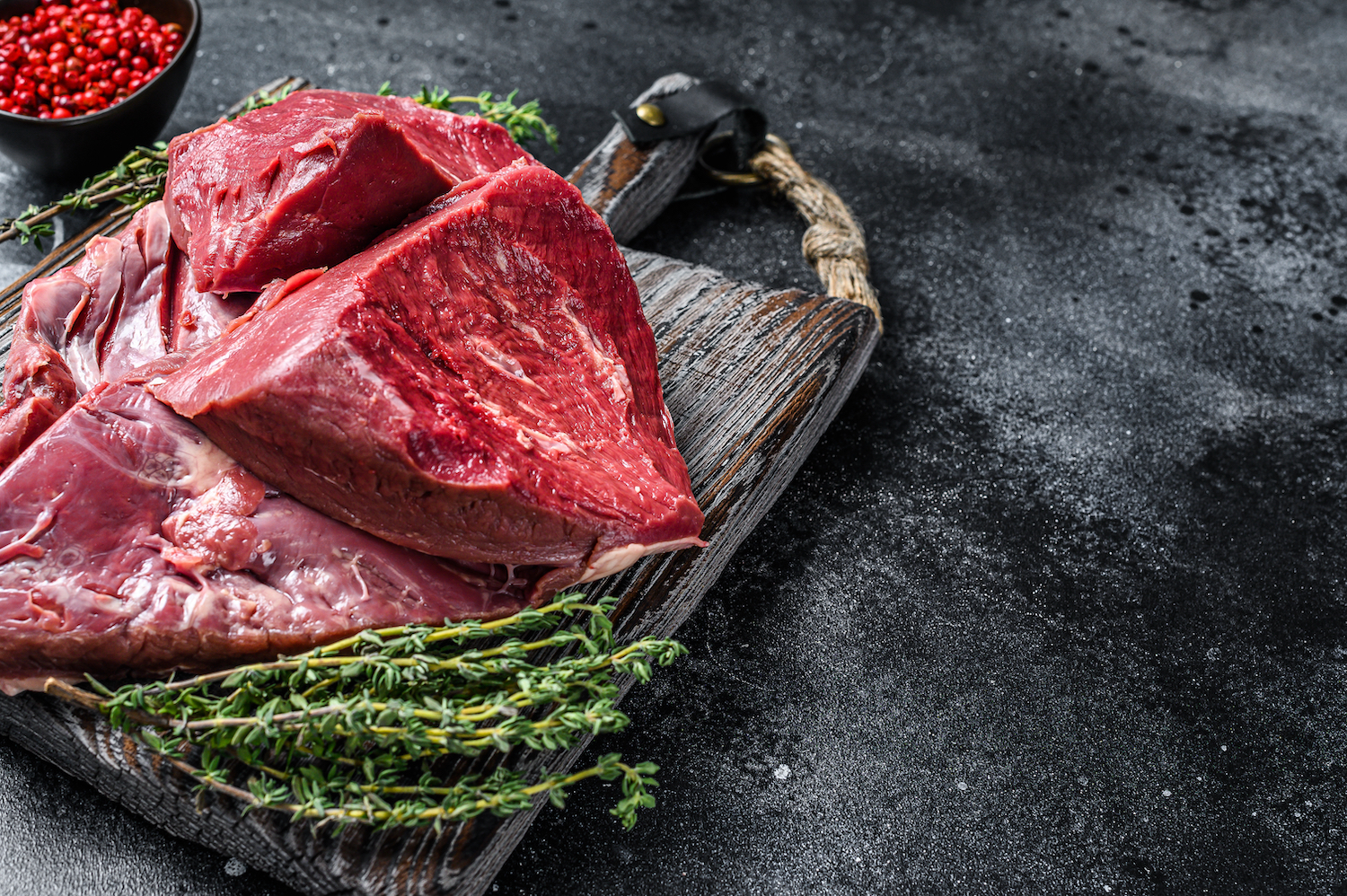By Rebecca L. Rhoades
Ever since humans first began using tools more than two and a half million years ago, meat has been an important source of protein and nutrition. However, a decadent medium-rare steak or greasy cheeseburger is a far cry from our ancestors’ first forays into carnivory.
Early societies would use all parts of any animal that was hunted. They considered it wasteful, if not disrespectful, to throw away any organs or bones. And what wasn’t consumed as food would be used for making clothes and tools or for heating. Many modern-day cultures still embrace these principles, including the Inuit and other indigenous tribes.
Deprived populations, such as African American slaves, were given the scraps leftover from the butchering process. Dishes such as head cheese, pigs’ feet, blood boudin, and chitterlings represent some of the earliest “delicacies” of Southern cuisine. In Scotland, haggis developed as a way to preserve an animal’s offal, ensuring that nothing went to waste.

Today, more than 80 billion animals are raised worldwide for human consumption annually, according to the Food and Agriculture Organization of the United Nations. The average American consumes about 274 pounds of meat per year — a number that has tripled over the past five decades. This includes chickens, pigs, turkeys, sheep, goats, and cattle. Sadly, the U.S. Department of Agriculture estimates that only half of the body of a slaughtered animal ends up being eaten. But our appetite for animal protein continues to grow.
In his groundbreaking 1999 book, “The Whole Beast: Nose to Tail Eating,” British chef Fergus Henderson, called for a return to appreciating and using every part of the animal. His recipes and dishes at his world-renowned London restaurant, St. John, are often lauded as innovative, yet they hark back to rural traditions.
“It makes more sense to eat the whole animal,” Henderson famously said in a 2017 Los Angeles Times interview. “We think this is an evolved idea — that it’s new — but we’ve done it in the past. The idea kind of got lost with the evolution of the way we eat our food, and supermarkets and such.”
Waste Not
As restaurants — and the food industry as a whole — face calls for more sustainable ways of preparing food, and as consumers gain more knowledge about factory farming and demand greater transparency of their food sources, interest in nose-to-tail cooking has increased in recent years.
Ingredients such as tongue, cheek, liver, bone marrow, and crispy skin are popping up on menus and in butcher cases across the country. While many of these items have long been staples of Asian and Mexican cuisine, they can now be found in some top fine-dining establishments, including the Michelin-starred La Tasquería in Madrid and Dinner by Heston Blumenthal. The menu at Dinner, with locations in London and Dubai, touts chicken liver parfait, veal shortbread, and marrowbone. And while most diners don’t even blink an eye at foie gras and liver pate, Blumenthal has taken it one step further with calf brain custard.
Closer to home, at James Beard Award-winning, Iron Chef Stephanie Izard’s Girl & the Goat restaurants in Los Angeles and Chicago, diners feast on roasted pig face, goat liver mousse, and goat belly. The menu at Atlanta’s Holeman & Finch Public House is packed with organ meats and offal, including chicken livers and veal sweetbread. And Argentine-inspired Ox in Portland serves up smoked beef tongue, spicy tripe, and crispy veal sweetbreads.
While these dishes make a statement, they also attract customers who are looking for more eco-friendly options. But is nose-to-tail dining really as good as it sounds?

Going Whole Hog
The concept of nose-to-tail dining has multiple benefits. Not only is it financially beneficial — using lesser cuts and offal is significantly cheaper than cooking with prime cuts of muscle meat — it also significantly reduces food waste. Not everyone wants to or can eat a strictly vegetarian or vegan diet, so for those who eat meat, having a way to utilize as much of the animal as possible is a return to our ancestors’ way of thinking.
Organ meats, bone marrow, and connective tissues also are dense sources of nutrients. They’re chock-full of vitamins, minerals, and amino acids. And for chefs and home cooks alike, these often-overlooked ingredients encourage greater creativity and introduce diners to new and exciting flavors.
But no matter how much of an animal is consumed, it still doesn’t negate the carbon footprint of the meat industry. According to the World Wildlife Fund, the production of beef, poultry, and dairy contributes significantly to habitat loss, greenhouse gas emissions, and water use. The organization expects animal protein consumption to grow by more than 70% between now and 2050. It encourages consumers to consider the environmental impacts of the foods they choose.
Those who do eat meat should look for local, small-scale producers who prioritize animal welfare and environmental stewardship for the greatest impact. And don’t be afraid to expand your palate. When done properly, cooking the whole animal should be both sustainable and delicious.
Let us know! Would you try the offal dishes? Read more Savor articles on Green Living.





